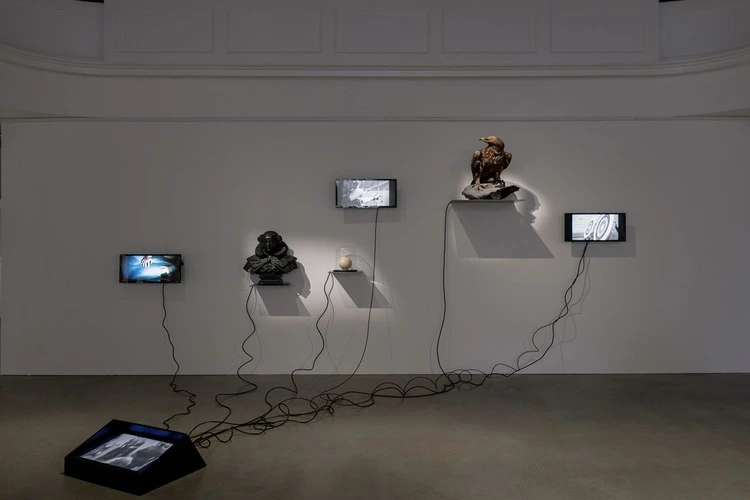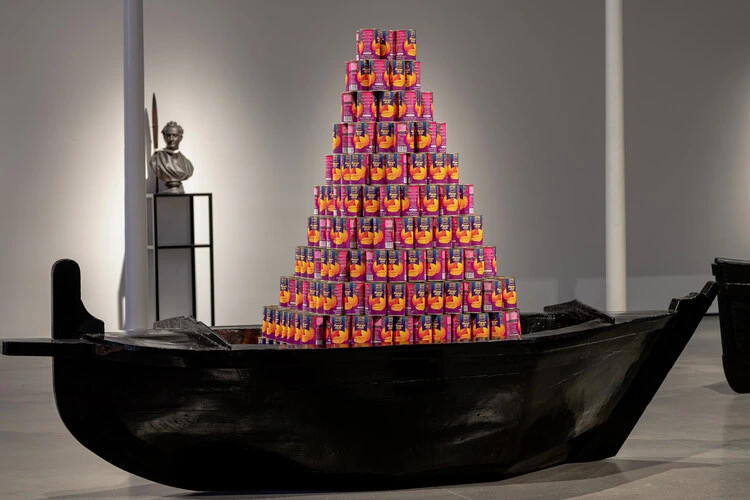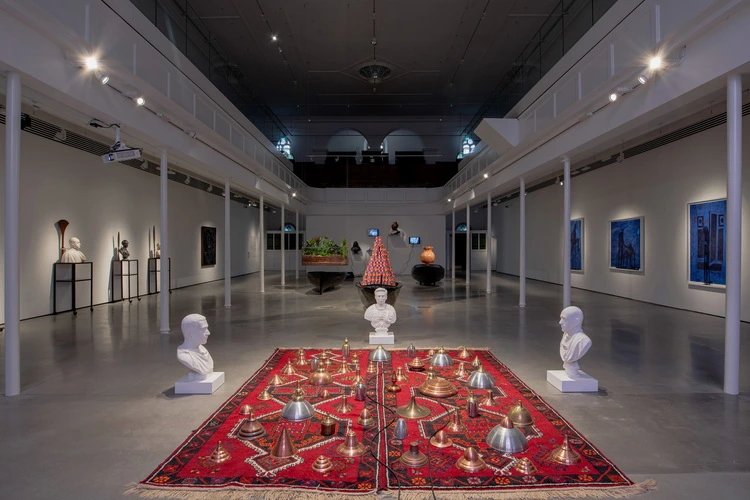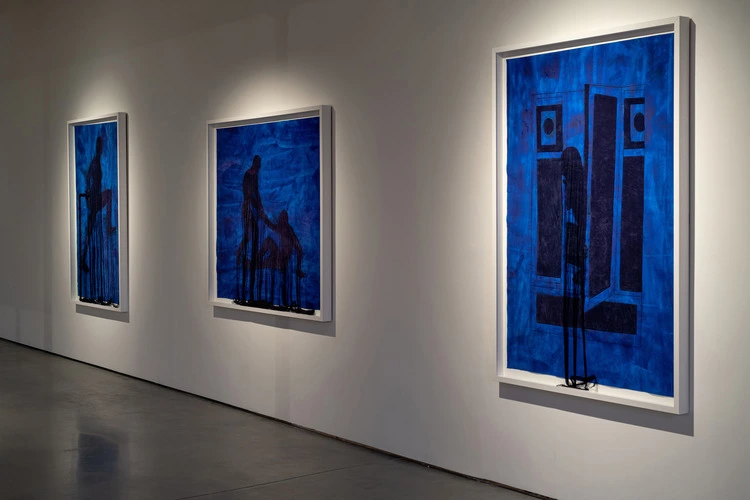
Osman Yousefzada’s latest exhibition ‘When will we be good enough?‘ shows the legacy of power and its ability to reinvent itself
By
Elon Musk, Jeff Bezos, and Mark Zuckerberg—figureheads of modern power—are what artist Osman Yousefzada calls the ‘overlords’ of our world. But this is not a power dynamic forged in the modern era: only a reconfiguration of the past, as his latest sculptural installation ‘When Will We Be Good Enough?’ encourages us to examine.
As the busts of Musk, Bezos and Zuckerberg – the installation’s centrepiece – are overlooked by busts of sixteenth-century elites, there are obvious comparisons of power dynamics at play.

Metal objects placed between, and in front, of the tech giants array from ashtrays to Rolls Royce headlights: both produced by the same individual, but with strikingly different market values. In Osman’s work, the power to assign value and commodify objects is a decision left to the elite few, both in our modern world and centuries ago.
Across the entire installation, then, the past and present state of the world overlap – often inextricably.
One part of the installation features an array of artwork—a bust of Queen Elizabeth I, a lone eagle, and a video loop of an archery target repeatedly being missed by an arrow–all linked by black cables to a TV screen showing a protester falling.
‘There is always someone who suffers within systems,’ Osman says. And this repeated imagery of a lone figure falling, and falling, and falling, uncomfortably highlights that. It situates us directly in front of the experiences often silenced, under-represented and ignored.

For Osman, being left in the margins – of not feeling good enough, as the title of the installation invokes – is a familiar experience, growing up as the son of migrants from South Asia. Many parts of When Will We Be Good Enough? – from pots covered in plastic, to a flotilla of boats with cargoes of tinned mangoes, plants and a poppy head – simultaneously capture elements of Osman’s own personal experiences as well as the larger colonial histories across cultural stratas.
Defining his work as ‘auto-ethnographic’ – where personal stories have the power to become political – it is clear that each part of the installation, and the histories it invokes, can be viewed through this two-fold lens.
Enjoying this article? Check out our related reads:
Forgotten histories are also referenced in the flotilla of boats in Osman’s installation. They point toward Musk, Bezos and Zuckerberg, but contain cargoes which stay within the confines of the boats, never occupying the space between the tech trio.

Tea, coffee and ferns – goods with clear colonial histories – are also stripped of their context and the labour required to produce them, reiterating the lack of focus both in past and present for exploited lives and labour.
The metaphor is clear: goods and personal histories are siphoned through power systems until what is deemed most worthy or valuable is left. Again, the decision in denoting worth, in When Will We Be Good Enough?, is reinforced as a privilege afforded to the few.

The question posed by the installation’s title has a double meaning, then: when will be good enough to escape a reality in which power is held by a select elite? And for many marginalised communities, Osman explains, the same question is often asked self-reflexively: when will we be good enough to fully integrate and assimilate into society?
These are questions that, for Osman, have neither clear-cut answers nor solutions. Artwork, for him, is a means to open up discussions about difficult questions on power, class and labour, rather than to encourage hostility or further divide communities.

So what do we make of the future of global power? Is it a bleak road ahead?
When Will We Be Good Enough? demands us to recognise the insidious ways in which power structures have embedded themselves into society. It speaks to injustices across vast plains of time – offers hope in the form of three alternate imagined futures rendered as deep blue tapestries at the installation’s edges – but crucially, these remain at the borders, never integrated into the entrenched dynamics at the centre.
So while the installation demonstrates a desire to shift some of the fundamental ways that power dynamics function, it also acknowledges the mammoth efforts and obstacles required to change – and potentially how unfeasible such a change could be – a sentiment echoed by Osman too.

‘In this world, poverty should not be a prerequisite for riches, nor should violence be excused in order for other communities to feel safe,’ Osman says. ‘But ultimately, there is never an end to injustice.’
Ultimately, by exploring When Will We Be Good Enough?, it is as if you are consuming volumes of history books, reams of modern-day critiques and the latest news stories all at once.
Flattening the time and space between histories allows a poignant and encompassing presentation of the lingering arc of power systems, and the legacies they continue to impart on our modern day world.



